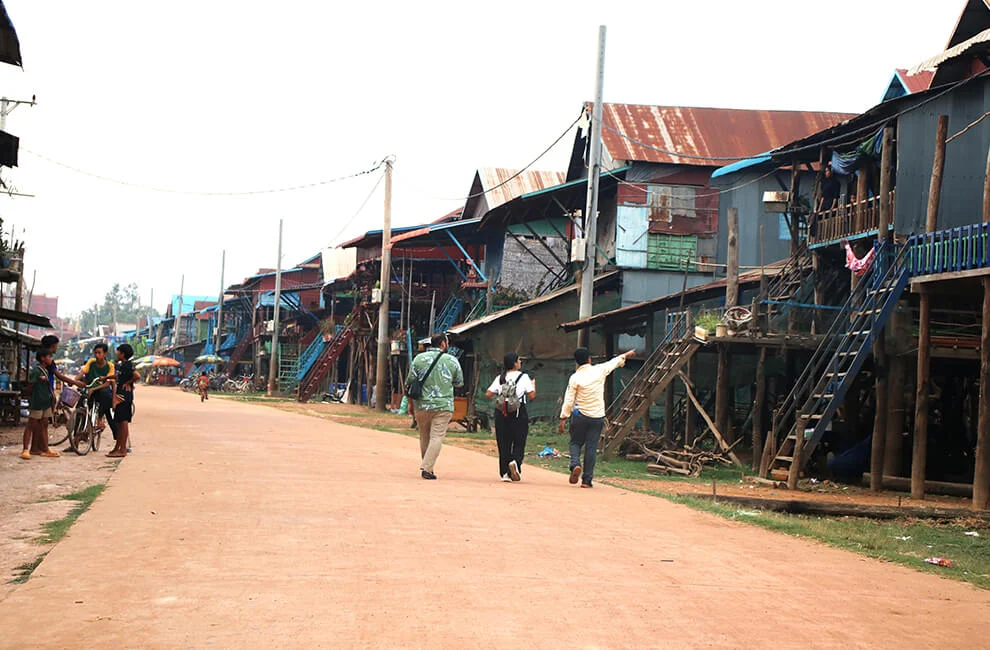Nestled in the heart of Cambodia, Kampong Phluk Village is a hidden gem that offers a glimpse into a way of life that has remained largely unchanged for centuries. This floating village, located on the edge of the Tonle Sap Lake, is renowned for its unique houses styles, which is perfectly adapted to the aquatic environment. In this article, we will explore the fascinating architectural styles of the houses in Kampong Phluk Village, delving into their design, construction, and cultural significance.
The Unique Architectural Style of Kampong Phluk Village
Stilted Houses: A Necessity in a Floating Village
One of the most striking features of Kampong Phluk Village is its stilted houses. These houses are built on tall wooden stilts, some reaching up to 10 meters in height. The primary reason for this elevated construction is the seasonal flooding of the Tonle Sap Lake, which can cause water levels to rise dramatically during the rainy season. By building their homes on stilts, the residents of Kampong Phluk ensure that their houses remain above water, even during the wettest months.
The stilted houses are typically made from locally sourced materials, including wood and bamboo. The walls are often constructed from woven bamboo mats, which provide excellent ventilation and help to keep the interiors cool in the hot Cambodian climate. The roofs are usually made from thatch or corrugated metal, offering protection from the elements.
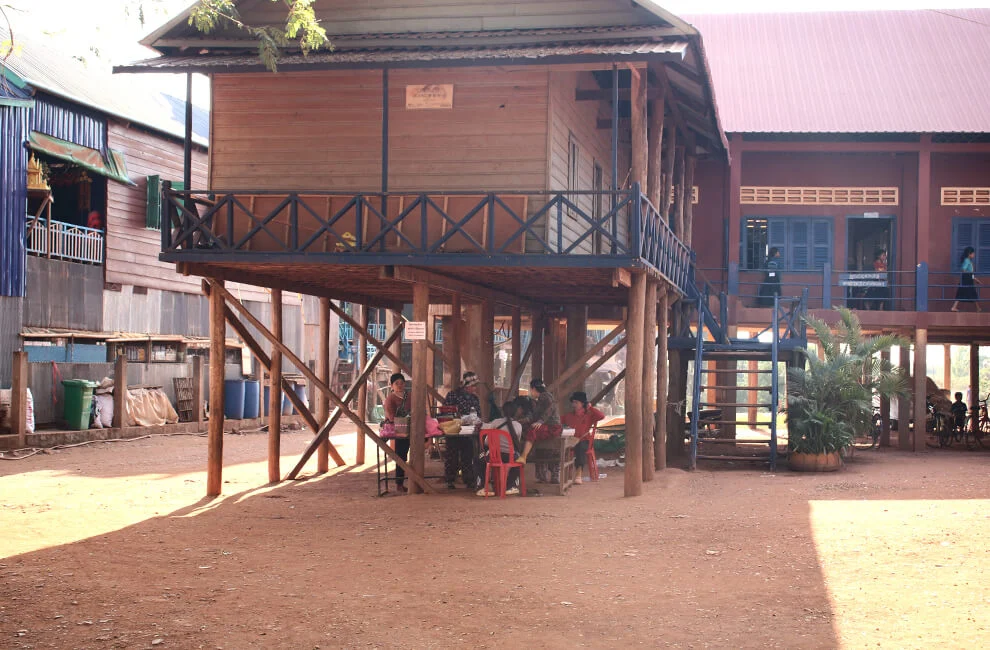
Floating Houses: Adapting to the Water
In addition to the stilted houses, Kampong Phluk Village is also home to a number of floating houses. These houses are built on rafts made from bamboo or wooden planks, which are anchored to the lakebed. Unlike the stilted houses, the floating houses rise and fall with the water levels, providing a flexible living solution that is perfectly suited to the dynamic environment of the Tonle Sap Lake.
The floating houses are typically smaller than the stilted houses, with simple, open-plan layouts. They are often used as temporary dwellings or for specific purposes, such as fishing or storage. Despite their modest size, these houses are ingeniously designed to make the most of the available space, with multi-functional furniture and clever storage solutions.
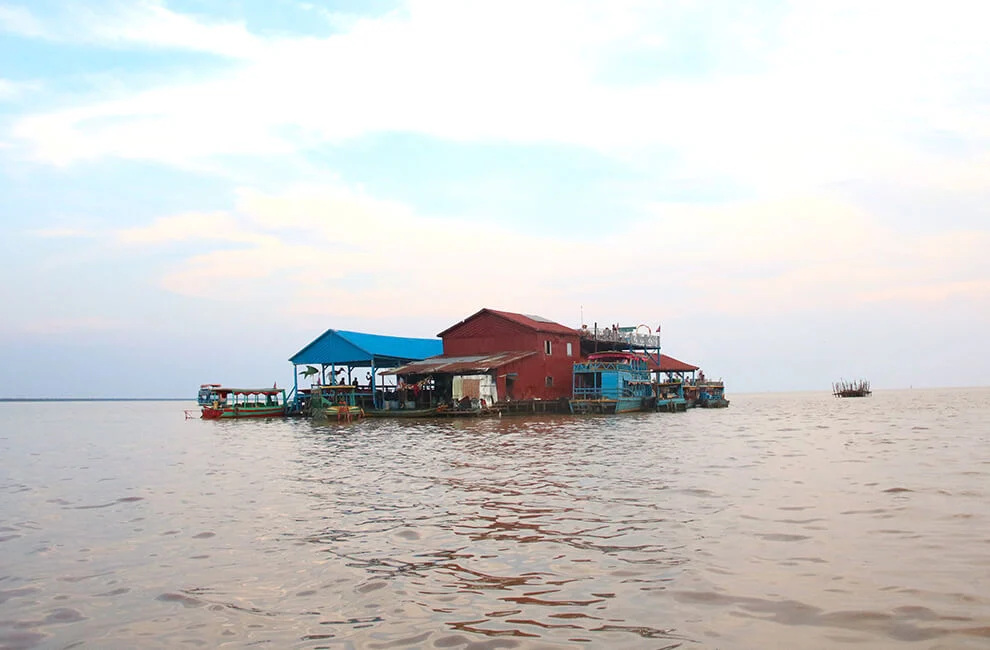
Traditional Khmer Design Elements
The houses in Kampong Phluk Village also feature several traditional Khmer design elements, which reflect the cultural heritage of the Cambodian people. One of the most notable features is the use of ornate carvings and decorative motifs, which can be seen on the wooden beams and pillars of the houses. These carvings often depict scenes from Khmer mythology or everyday life, adding a touch of artistry to the functional structures.
Another common feature is the use of open verandas and balconies, which provide a space for residents to relax and enjoy the views of the lake. These outdoor spaces are often adorned with potted plants and flowers, creating a tranquil and inviting atmosphere.
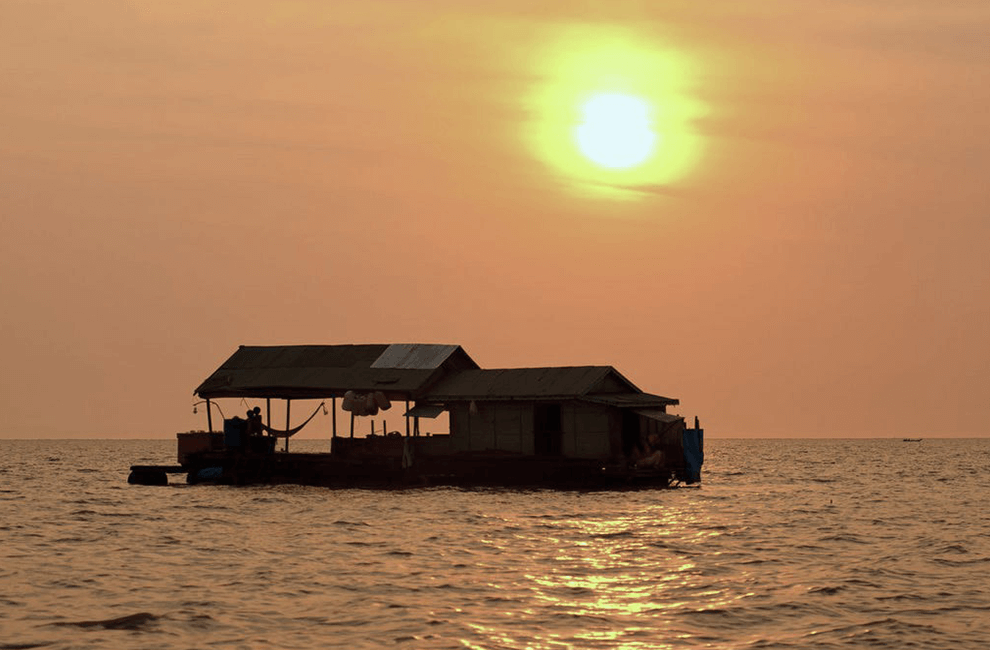
Private Sunset Tour of Kampong Phluk Floating Village
- Duration: 3 Hours
- Destination: Siem Reap
- Group Size: 2-12 People
$51

Siem Reap: Kampong Phluk Floating Village Guided Tour
- Duration: 4 Hours
- Destination: Siem Reap
- Group Size: 2-12 People
$47
The Construction Process: A Community Effort
Building a house in Kampong Phluk Village is a community effort, with neighbors and family members coming together to help with the construction. The process typically begins with the selection of a suitable site, which is then cleared and prepared for building. The stilts are driven deep into the lakebed, providing a stable foundation for the house.
Once the stilts are in place, the frame of the house is constructed using wooden beams and bamboo poles. The walls and roof are then added, with the final touches being the ornate carvings and decorative motifs. The entire process can take several weeks or even months, depending on the size and complexity of the house.
Sustainability and Environmental Considerations
The construction of houses in Kampong Phluk Village is deeply rooted in sustainability and environmental considerations. The use of locally sourced materials, such as wood and bamboo, minimizes the environmental impact and ensures that the houses are in harmony with their surroundings. Additionally, the stilted and floating houses are designed to have a minimal footprint on the lake, preserving the delicate ecosystem of the Tonle Sap Lake.
The residents of Kampong Phluk also practice sustainable fishing and farming methods, which further contribute to the preservation of the environment. This holistic approach to living in harmony with nature is a key aspect of the village’s cultural identity.
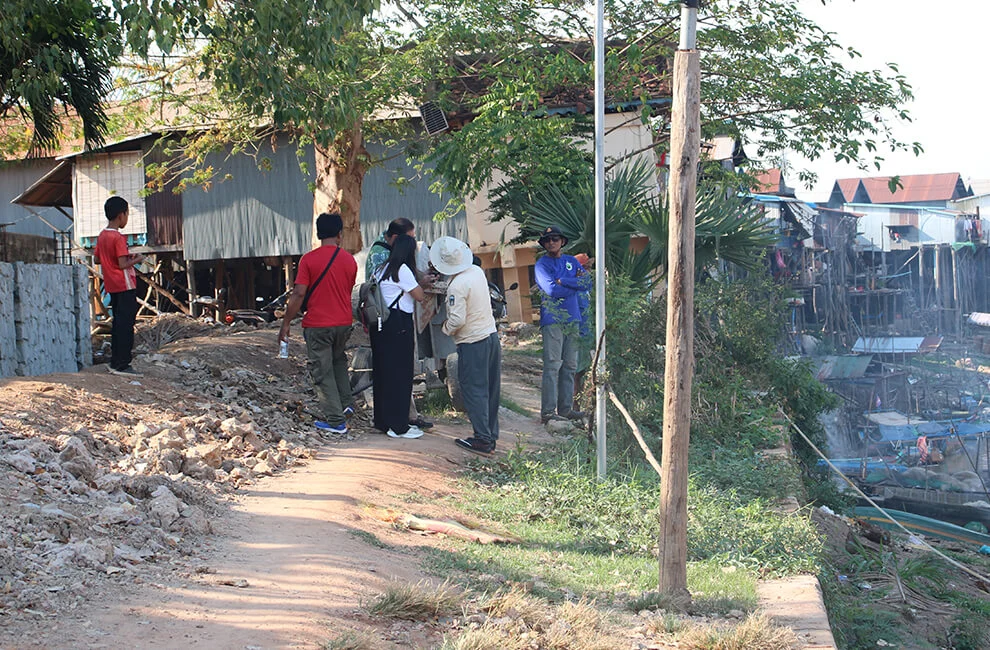
The Cultural Significance of Houses in Kampong Phluk Village
The houses in Kampong Phluk Village are more than just functional structures; they are a reflection of the community’s way of life and cultural heritage. The stilted and floating houses are a testament to the ingenuity and resilience of the Cambodian people, who have adapted to the challenges of living in a dynamic and ever-changing environment.
The traditional Khmer design elements found in the houses also serve as a reminder of the rich cultural history of Cambodia. The ornate carvings and decorative motifs are not just decorative; they are a form of storytelling, preserving the myths, legends, and traditions of the Khmer people.
Tourism and the Preservation of Kampong Phluk Village
In recent years, Kampong Phluk Village has become a popular tourist destination, attracting visitors from around the world who are eager to experience the unique way of life in this floating village. While tourism has brought economic benefits to the community, it has also raised concerns about the impact on the village’s cultural and environmental heritage.
Efforts are being made to ensure that tourism is managed in a sustainable and responsible manner, with a focus on preserving the traditional houses styles and way of life in Kampong Phluk. Community-based tourism initiatives have been established, which allow visitors to experience the village in a way that is respectful and supportive of the local community.
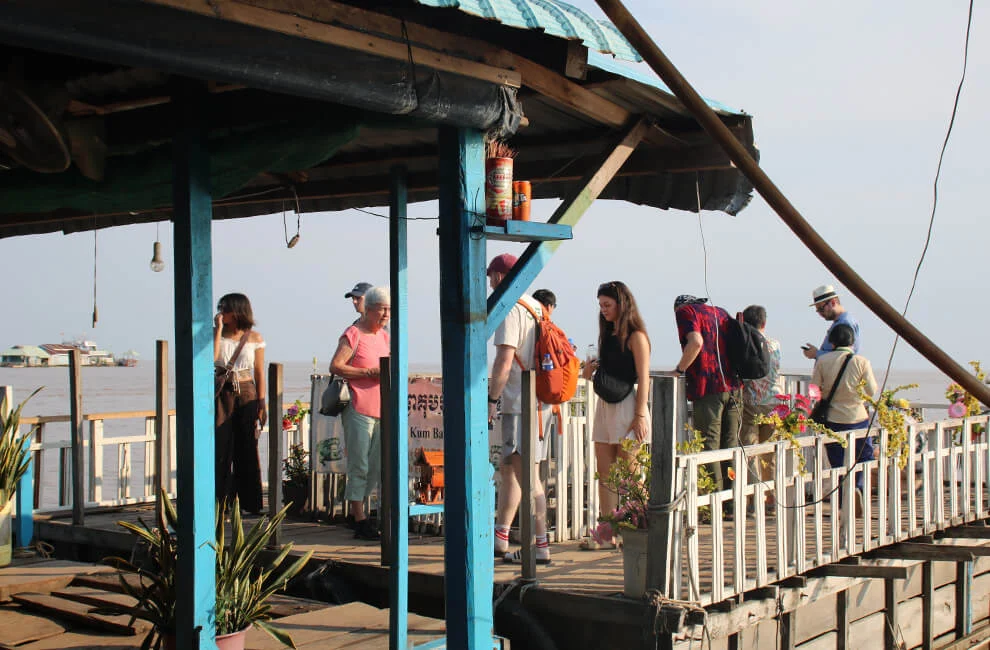
FAQs About Houses Styles in Kampong Phluk Village
What is the most distinctive feature of houses in Kampong Phluk Village?
The most distinctive feature is that the houses are built on tall wooden stilts, ranging from 6 to 9 meters high. This design helps protect the homes from flooding during the wet season when the water levels rise significantly.
Why are houses in Kampong Phluk built on stilts?
The houses are built on stilts to adapt to the seasonal flooding of the Tonle Sap Lake. During the wet season, the water levels can rise dramatically, submerging the lower parts of the village. Stilts keep the living spaces above water.
What materials are commonly used to construct houses in Kampong Phluk?
Houses are primarily constructed using locally sourced materials such as wood, bamboo, and thatch. These materials are lightweight, durable, and well-suited to the humid, flood-prone environment.
How do the house styles in Kampong Phluk reflect the local way of life?
The house styles reflect the community’s reliance on fishing and the natural environment. The stilted design accommodates the seasonal changes in water levels, while the open structures allow for ventilation and easy access to boats.
What is the typical layout of a house in Kampong Phluk?
A typical house has a single room or a few small rooms on the upper level, supported by stilts. The lower level is often used for storage, boat parking, or as a shaded area for socializing during the dry season.
How do residents access their homes during the wet season?
During the wet season, when water levels are high, residents use boats to navigate the flooded village and access their homes. Stairs or ladders lead from the water level up to the living areas.
Are there any modern influences on the house styles in Kampong Phluk?
While traditional materials and designs are still prevalent, some modern influences, such as corrugated metal roofs and concrete supports, can be seen in newer constructions. These materials are more durable and require less maintenance.
How do the houses in Kampong Phluk differ between the wet and dry seasons?
In the wet season, the houses appear to “float” on the water, with only the upper levels visible. In the dry season, the water recedes, revealing the stilts and allowing residents to use the ground level for activities like repairing boats or socializing.
What role does the environment play in shaping the architecture of Kampong Phluk?
The environment is a key factor in the village’s architecture. The stilted houses are a direct response to the seasonal flooding of the Tonle Sap Lake, and the use of natural materials reflects the community’s close connection to the surrounding ecosystem.
How do the house styles in Kampong Phluk contribute to the village’s cultural identity?
The stilted houses are a symbol of the village’s resilience and adaptability to the natural environment. They represent the community’s traditional way of life, which is deeply intertwined with the rhythms of the Tonle Sap Lake and its ecosystem.
Conclusion: A Living Testament to Cambodian Culture
The houses styles in Kampong Phluk Village is a living testament to the ingenuity, resilience, and cultural heritage of the Cambodian people. The stilted and floating houses are perfectly adapted to the unique environment of the Tonle Sap Lake, while the traditional Khmer design elements reflect the rich cultural history of Cambodia.
As Kampong Phluk Village continues to attract visitors from around the world, it is essential that efforts are made to preserve this unique architectural marvel and the way of life that it represents. By embracing sustainable tourism practices and supporting the local community, we can ensure that the houses styles in Kampong Phluk Village remains a source of pride and inspiration for generations to come.


